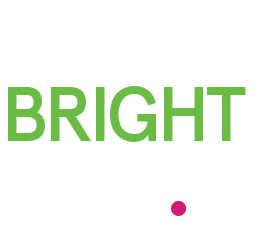Bright Listening Builds Deep Connections—Even on a Zoom Call
We’re all discovering that there’s currently no such thing as an “accidental” connection at work. Impromptu water cooler conversations, unplanned lunchtime chats, and spontaneous hallway discussions have been replaced by scheduled video conferences with select participants. No one “drops by” on Zoom just because they feel like it!
Because we’re no longer building connections by chance, we’re having to dial-up our focus and presence to make our interactions meaningful. At Live Bright Now we call this practicing “bright listening.”
Bright listening helps us hear the intentions behind the words
Bright listening requires a generous, other-centered focus and a clear intention of hearing not just what the other person is saying but also why they’re saying it. When we lean in with our head and our heart, we start to understand the unseen forces and perspectives shaping the speaker. A bright listener gathers answers to unspoken questions like, where did this person come from? What unique point of view are they bringing to this conversation?
Bright listening builds empathy. It lets us stand in the speaker’s shoes (so to speak), and it also helps us understand why they chose those particular shoes—stilettos, hiking boots, sneakers, or Italian loafers—in the first place. Bright listening means slowing down, reserving judgment, and probing with curiosity and humility. (No surprise, bright listening is impossible if you’re multitasking.)
Being truly heard is a gift, but in our distracted, overloaded world, it’s one we rarely receive or give. Yet there are so many reasons why we should! When someone takes the time to really listen, the speaker’s confidence is elevated and they feel worthy of being understood.
When a leader listens in this way, she offers a special gift to her colleague or team member. Try it—and watch the speaker’s face transform because being truly heard and seen leads to visible radiance and joy.
3 settings of listening
It’s helpful to think of listening as a light switch with three distinct settings.
Dim: Listening to speak. We’ve all done it: We may look like we’re listening, but really, we’re just waiting for the other person to stop talking so we can say what’s on our mind.
Ambient: Listening to hear. Now we’re in the realm of “active” listening. Being able to hear what someone else says is an important skill, and you may have practiced it through exercises like paraphrasing what you heard the speaker say.
Bright: Listening for deep understanding. Here’s where the magic happens. At this level, you’re paying attention, with an open mind and an open heart, to the rich texture of the conversation—the speaker’s words, gestures, tone of voice, body language, the frame of reference, and their stated or underlying intention. In this space, bright listening lets you truly hear all of what the other person is trying to say. You can understand, affirm, and even add to the speaker’s perception of what’s possible for themselves.
Here’s a simple tip for bright listening: Listen until someone is actually finished with their sentence. Then try asking, “Is there anything else?” Michael Stanier, author of The Coaching Habit, prefers the “AWE” question: “And What Else?” While you listen, resist the urge to finish the speaker’s sentence or to jump in with a story of your own. Allow a moment or two of silence so the speaker can reflect on additional details they might have missed. This kind of listening takes both self-awareness and discipline.
Better Zoom calls are just the beginning
Experts say that developing this quality of listening will improve team performance, enhance leadership relationships, and make miscommunication and misunderstanding less likely. Bright listening creates deep connections that enrich collaboration on a team or in a family. In short, bright listening sets you up to have more satisfying and successful relationships—even on Zoom.
Like any skill worth honing, mastering bright listening takes practice. The benefits will go far beyond your relationships with your teammates and colleagues. This important life-skill can help you communicate better with anyone, from friends and roommates to spouses and loved ones.
If you think it sounds like too much work, especially when we’re all worn out from spending so much time on screens, consider this. We got our first taste of bright listening way back in kindergarten when the teacher would say, “Put your listening ears on!” All these years later, it’s time to remember how to do it.
Need help creating a company culture based on Bright Listening and meaningful communication? Get in touch.
